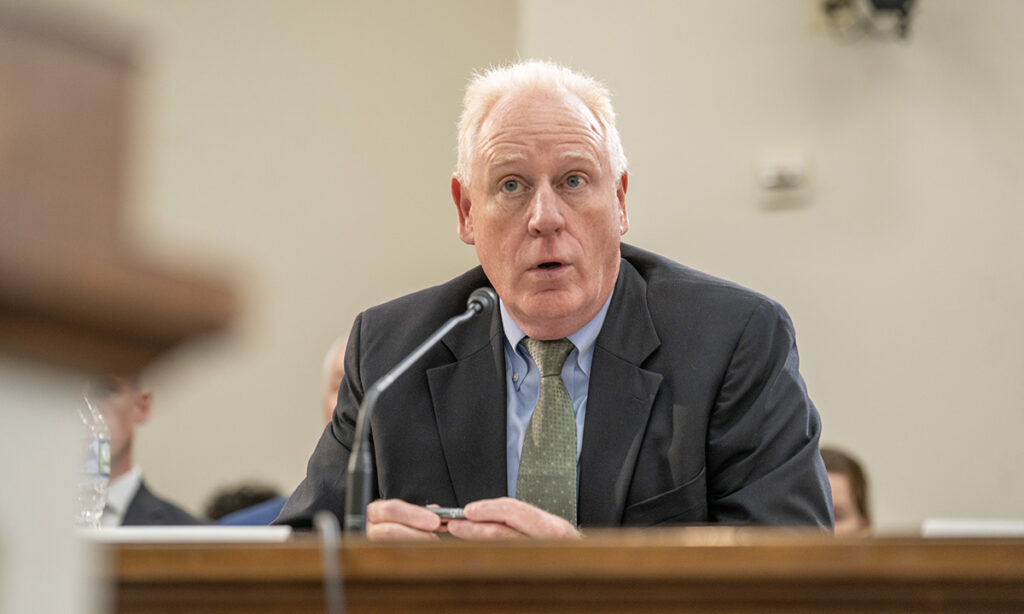
The Environmental Protection Agency’s proposed rule to regulate greenhouse gas emissions from coal and natural gas-fired power plants threatens electric cooperatives’ ability to provide reliable, affordable electricity to their members, an Ohio co-op leader told a House panel Tuesday.
Patrick O’Loughlin, president and CEO of Buckeye Power Inc. and Ohio Rural Electric Cooperatives, told the House Energy and Commerce Subcommittee on Environment, Manufacturing and Critical Materials that Buckeye Power and NRECA are reviewing the 500-page rule proposed by the EPA in May and have grave concerns.
“While this review is far from complete, it is clear that this proposal will further strain America’s electric grid and undermine our ability to keep the lights on at a cost our communities can afford,” he testified at a hearing on the EPA proposal.
Buckeye Power is a generation and transmission cooperative that provides power to 24 distribution co-ops in Ohio. The majority of the co-op’s power comes from coal, with additional power provided by natural gas, solar, hydropower, biomass and other small-scale renewable energy generation, O’Loughlin said.
Coal-fired plants and large natural gas-fired plants would generally be required under EPA’s proposed rule to begin operating significant emissions controls in 2030 to cut or capture nearly all their carbon dioxide emissions by 2038. Plants that can’t meet those standards would be forced to shut down.
“Buckeye Power will be required to shut down all of our coal-fired units by 2030 with no hope of nearly replacing this energy within that timeframe,” O’Loughlin said. “Similar unrealistic ‘green’ hydrogen co-firing and CCS (carbon capture and storage) requirements for new natural gas plants preclude using natural gas as a substitute for coal plants closed by this rule.”
It would cost Buckeye Power billions of dollars to replace its coal generation with renewable power, he said.
“To replace the energy output of just one 600-megawatt Cardinal unit would require more than 1,500 MW of solar—requiring at least 6,000 acres of land and an investment of at least $1.5 billion,” O’Loughlin said. “That is to replace just the energy output, and not the other reliability services our coal units provide, and certainly won’t help on the cold winter nights like we experienced this past Christmas.”
Some of the new technology that EPA is advocating—including carbon capture and hydrogen power—is still experimental, O’Loughlin said.
“Our company, and ultimately our members, can’t afford to implement full-scale science experiments at our power production facilities as EPA proposes we must or shut down by 2030,” he said.
In addition to detailing his major concerns with the proposed rule, O’Loughlin told lawmakers that the EPA should:
- Extend its comment period beyond July 24 to give those affected more time to review the long, complicated rule.
- Provide sufficient time for reliability assessments by the North American Electric Reliability Corp. and others.
- Hold an official small-business panel to assess the impact of the proposed rule on these businesses.
“Buckeye and America’s electric cooperatives look forward to working with you to ensure that actions to improve our nation’s environment are pursued in a way that also advances our mission of providing affordable and reliable power to the communities we serve,” O’Loughlin said.
Erin Kelly is a staff writer for NRECA.